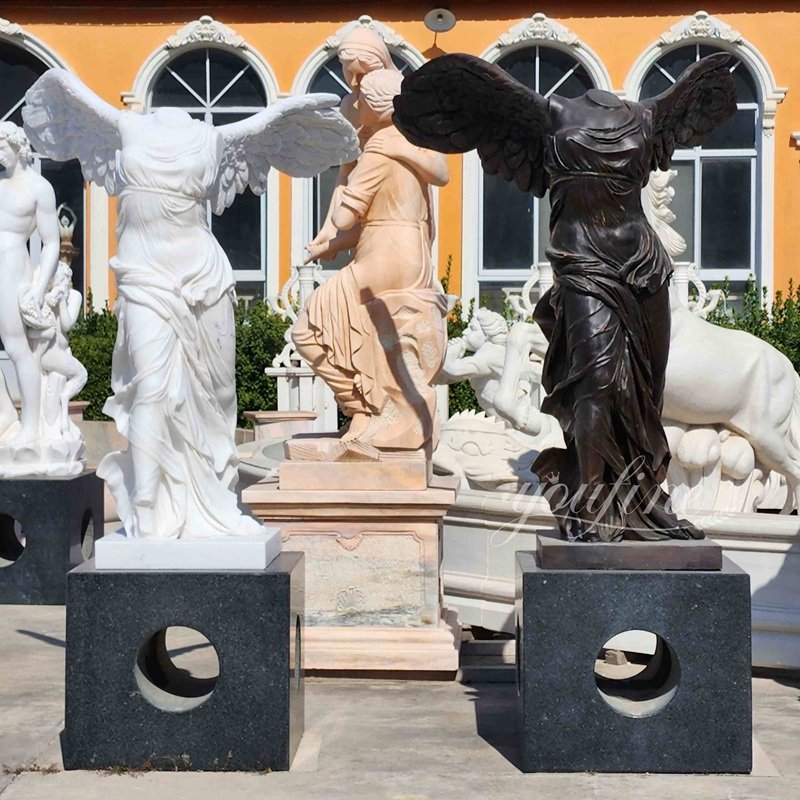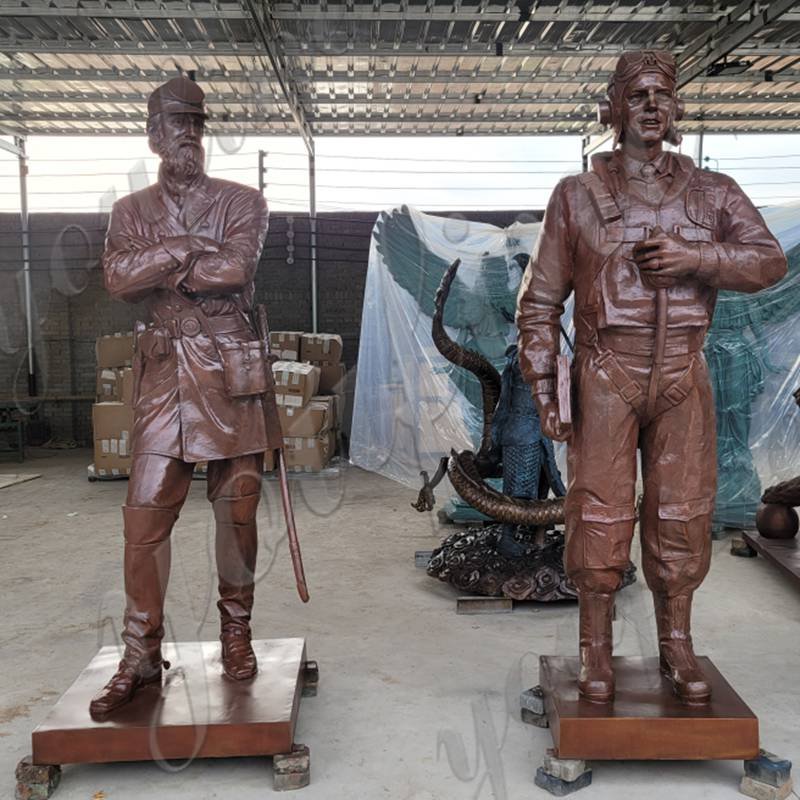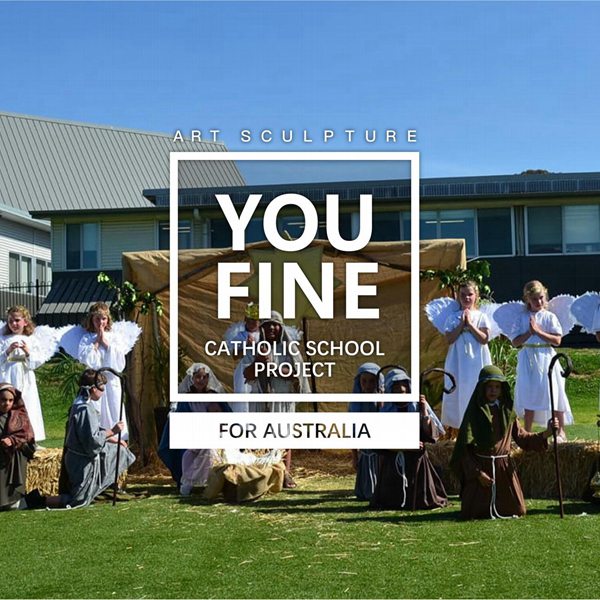Among the many art forms, sculpture is undoubtedly the pinnacle of ancient Greek art. In particular, those lifelike goddess sculptures not only demonstrate the superb skills of ancient Greek sculptors but also deeply reflect the ancient Greeks’ reverence and belief in gods. Today, we will lead you to explore 8 famous Greek goddess statues and feel their eternal charm spanning thousands of years.
Venus de Milo Statue
The Venus de Milo, also known as Aphrodite of Milo-Milo and Venus with Broken Arms, is now in the Louvre Museum in Paris, France. It depicts Aphrodite, the goddess of love and beauty in Greek mythology.
Made of marble, it is about 2 meters high. The goddess Venus has an elegant posture, with her right leg slightly bent and her left leg upright. Her body presents an S curve, her eyes drooping, and her expression calmly and gently looking into the distance.
The broken arms not only do not affect the beauty of the sculpture but add a sense of mystery and tranquility. The perfect golden ratio of the entire sculpture has become a symbol of eternal female beauty.




Athena Sculpture at the Academy of Athens
Athena is a famous goddess of wisdom, battle, and weaving skills in Greek mythology. She is also widely regarded as a symbol of wisdom, art and classical learning, freedom, and democracy, and is the patron saint of Athens.
The Athena sculpture at the Academy of Athens on Panepistimiou Street was created by artist Leonidas Derosis (1836-1882), depicting a heroic Athena wearing a long skirt and a helmet, holding a spear in one hand and a shield in the other. She stands with one leg upright and the other leg slightly bent. The gentle flowers on her skirt form a sharp contrast with her firm facial expression.

Aphrodite Statue of Knidos
Aphrodite is the goddess of love, beauty, and sex in Greek mythology, with the most perfect figure and appearance in ancient Greece.
Aphrodite of Knidos was created by Praxiteles of Athens in the 4th century BC. Aphrodite stands with one hand covering her pubic bone and the other holding a bath towel, with a neat bun on her head. She has a beautiful face, and naked body, revealing her beautiful breasts, graceful posture, and head tilted to one side.


Winged Victory of Samothrace Sculpture
The goddess Nike is the daughter of the Titans Pallas and Styx, and the sister of Kratos (strength), Bia (power), and Zelos (zeal), all companions of the main god Zeus. In the Titan Wars, Nike stood on the side of the Olympian gods[2] and brought them victory. She is often described as having wings and amazing speed.
The Winged Victory of Samothrace is one of the most famous masterpieces of ancient Greek sculpture and is now in the Louvre Museum in Paris. Created in the 2nd century BC, the goddess is wearing a light long skirt, with wings spread out, leaning forward, and the folds on the skirt show the wind blowing. Although it lacks a head and arms, the overall shape is still a kingly demeanor, which is shocking.



Diana Statue of Versailles
The Roman goddess Diana, corresponding to Artemis in Greek mythology, symbolizes purity, nature, and independence. She is considered the patron goddess of the moon and the goddess of hunting.
The Diana of Versailles is collected in the Louvre Museum in Paris. It depicts a life-size goddess Diana and a deer, made of marble. Artemis is wearing a short skirt and standing on a square base. She holds the deer’s head in one hand and touches the arrow behind her with the other hand. She leans forward and her posture is full of movement.


Hecate Sculpture in the Vatican Museum
Hecate is a Titan goddess in Greek mythology, and also the “Moon Goddess” or “Black Moon Goddess” who symbolizes the dark moon night. Hecate is known as the “Queen of Ghosts”, “Mistress of Black Magic” and “Master of the Keys of Hell”. She is a magical goddess with powerful magic.
The Hecate sculpture in the Vatican is a replica of the ancient Roman period. Hecate stands on a round base, with each head and body facing different directions, and her posture is elegant and solemn. Their clothes are light and flowing, and the folds are natural and smooth.

Hera sculpture in the Louvre
Hera is the queen of heaven in ancient Greek mythology. She is the most powerful goddess among the Olympian gods. She is regarded as the patron saint of marriage and women, the chief of marriage and childbirth, and the guardian of mothers.
The Hera in the Louvre Museum in France stands on a pedestal, she wearing a long dress and a shawl on her head. She is calm and noble, holding a candle in one hand and a bowl in the other.

Antonio Canova’s Hebe Statue
Hebe is the goddess of youth or adulthood, the cupbearer of the gods on Mount Olympus, providing them with nectar and delicious food. She is also regarded as the goddess of forgiveness or mercy.
Antonio Canova’s Hebe statue is in the State Hermitage Museum and vividly depicts the goddess Hebe in an elegant posture. In the sculpture, Hebe holds a golden wine jug in one hand by her head and a golden wine glass in the other hand. She wears a long skirt with a naked upper body. The skirt is naturally flowing, her eyes drooping, and her legs stand one after the other.



These 8 famous Greek goddess statues are the treasures of ancient Greek art and precious cultural heritage. They allow us to experience the culture and history of thousands of years ago through the works of outstanding artists.
With the development of carving techniques, the reproduction of famous sculptures has become possible and common. If you want to experience the charm of these famous Greek goddess sculptures permanently and immersively, you could contact us to have them made for you. With more than 40 years of export experience and the exquisite carving experience of artists, the highly restored details and high-quality raw materials would surely satisfy you.




